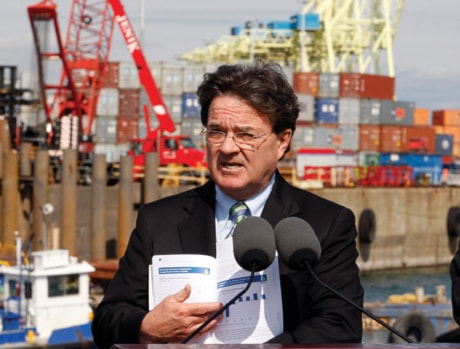OTTAWA — Up to a third of the projects funded by the federal government’s centrepiece stimulus program won’t be completed by year-end, the latest government update shows.
In a report designed to pat the federal Tories on the back for reviving the Canadian economy after the global recession, the fine print bolsters what the critics have argued for months: that a significant number of projects could be left in the lurch if Ottawa cuts off its funding next March.
“Current monitoring ... shows that approximately two-thirds of projects will be finished by the end of December 2010,” a statement buried in the report says, referring to the government’s $4-billion Infrastructure Stimulus Fund.
The report does not forecast how many of the remaining projects will be concluded between January and March, but mayors and contractors alike have warned that little work can be done in the winter.
Federal funding is scheduled to be cut off March 31, not just for the infrastructure fund but an array of other stimulus programs as well.
Mayors and contractors fear they will be left paying the bills once Ottawa pulls out, at a time when their finances are already stretched to pay for their share of the stimulus effort.
The federal Tories have softened their rhetoric on the funding cut-off in the past two weeks. They have said they are looking for ways to be somewhat lenient, and are negotiating with provincial governments over how to go about it.
On Monday, Transport Minister Chuck Strahl said he would have better information about delays in a week or two.
But the government has yet to clarify how it will show flexibility, and which projects will benefit.
“If there are projects that are virtually completed, we’re going to be fair and reasonable, of course, at the end of March,” Finance Minister Jim Flaherty said Monday in Montreal.
“If there are situations where there’s only a little bit more to be done to complete the project, we’re not going to be unreasonable about it.”
He stressed that Ottawa has committed funding to 23,000 projects across the country, and 22,500 of those have either been completed or are well underway.
But the Parliamentary Budget Officer has projected that approximately 900 projects in the ISF program alone are at risk of not finishing in time, leaving about $300 million unspent.
Municipal officials say a third of Quebec’s stimulus projects are in trouble, mainly because of delays in negotiating contracts.
And an Ontario government website tracking progress on the construction shows only a small proportion of projects were more than half done by August.
Some provinces have suggested Ottawa set up a trust for any infrastructure funding not spent by March 31, and allow the projects to use that money as they need it. That way, Ottawa wouldn’t have to spend any more money and the spending would be booked in this fiscal year, allowing a focus on deficit-cutting next year.
Sources say Ottawa isn’t closed to the idea, but Flaherty and Prime Minister Stephen Harper are adamant that the discourse of fighting the deficit trump any talk of being flexible on stimulus.
The Liberals are calling on the Tories to make their intentions clear — although they also stressed that they, like the Conservatives, don’t want another new round of stimulus spending.
“We’re not talking about another stimulus plan, a second stimulus plan. These guys have emptied the bank, right? There’s no possibility of that,” Liberal Leader Michael Ignatieff said.
“But we are saying some flexibility, for heaven’s sake. Because if you don’t, you’re going to jack up construction costs, there’s going to be a rush to finish, the work won’t be done properly.”
The federal Tories say their $62-billion stimulus package — made up of infrastructure spending, tax cuts and Employment Insurance enhancements — has saved or created almost 200,000 jobs since the beginning of 2009.
The sixth update on how well the stimulus package is working says the plan is on track, and has been responsible for supporting much of Canada’s recovery.
But Ottawa has not actually counted the jobs created by its array of programs, improvements to Employment Insurance and various tax cuts.
Rather, in an annex to the report, the government explains that it has estimated the job creation by using a combination of mathematical models and assumptions based on history.
“This is a government that counts signs more carefully than it counts the unemployed,” said Ignatieff.
Indeed, the Conservative government has 18 departments and agencies tracking the installation of signage on a weekly basis, and has tracked and recorded more than 8,500 Economic Action Plan signs across Canada in the last year.
Harper himself is getting briefings on the sign count, according to documents obtained by The Canadian Press under the Access to Information Act.
Now, the Liberals say all the sign-counting and politicking has led to delays in issuing federal project money.
“Kids can’t swim in an 80 per cent-completed swimming pool,” Liberal finance critic Scott Brison said.
“It is ludicrous for a federal government to be so obsessed with the signs, and putting the signs up, that they are neglecting actually completing the projects.”
